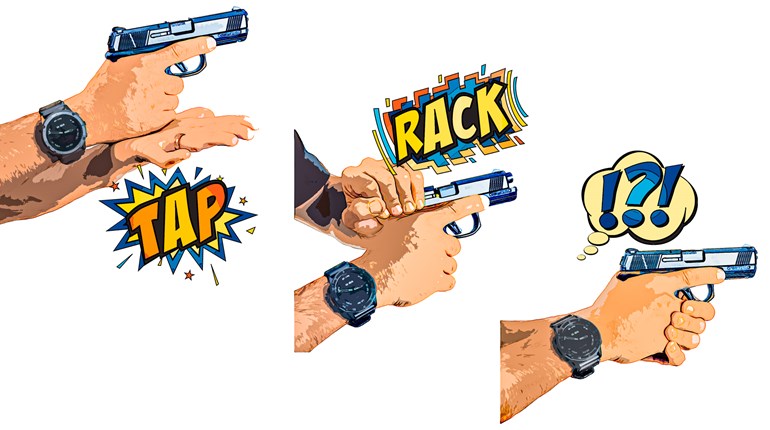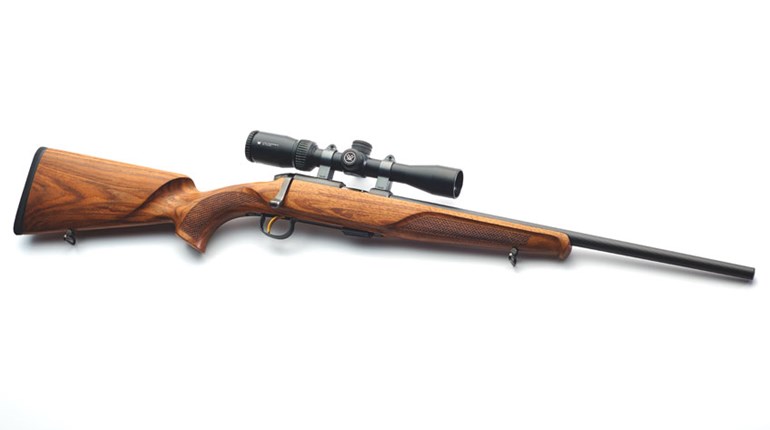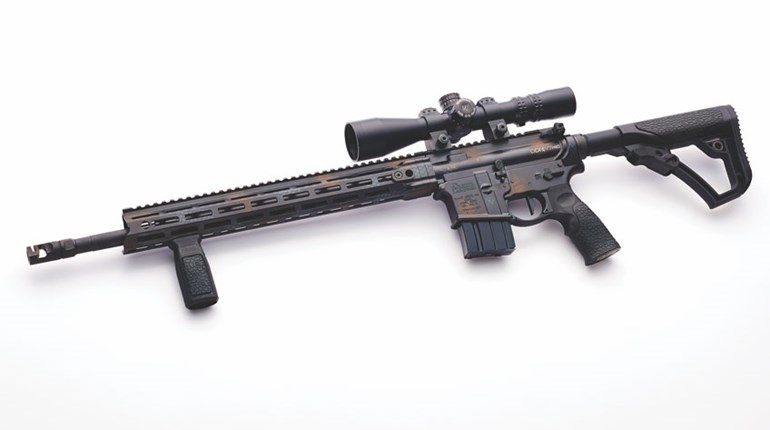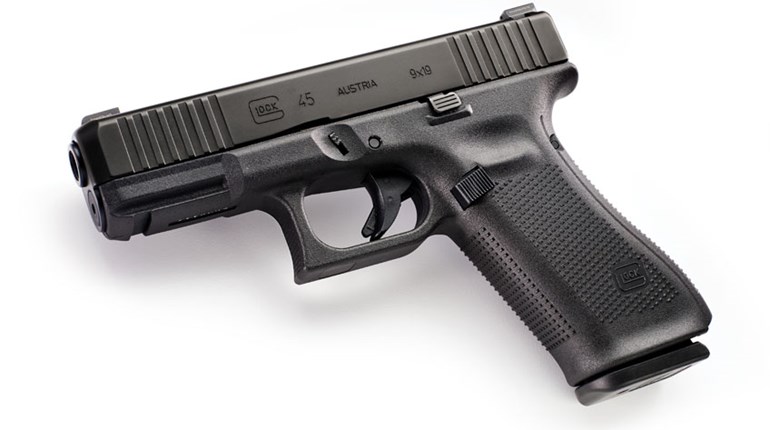
Malfunctions are big, bad business in the Carry Life for reasons that need little clarification. We certainly don’t want to employ that firearm, but when we must, it had better work. Not surprisingly, this is a classic good news/bad news dichotomy. The good: Most modern carry-type handguns are marvels of accuracy and reliability, especially if you’ve taken the trouble to develop sound technique. The bad: Malfunctions can still occur, even with the best firearms and ammunition.
You owe it to yourself, and those who are counting on you, to know what these malfunctions feel/look like, and how to correct them. To this end, we’ve spent time on the malfunctions themselves, and also examined some causes (here and here).
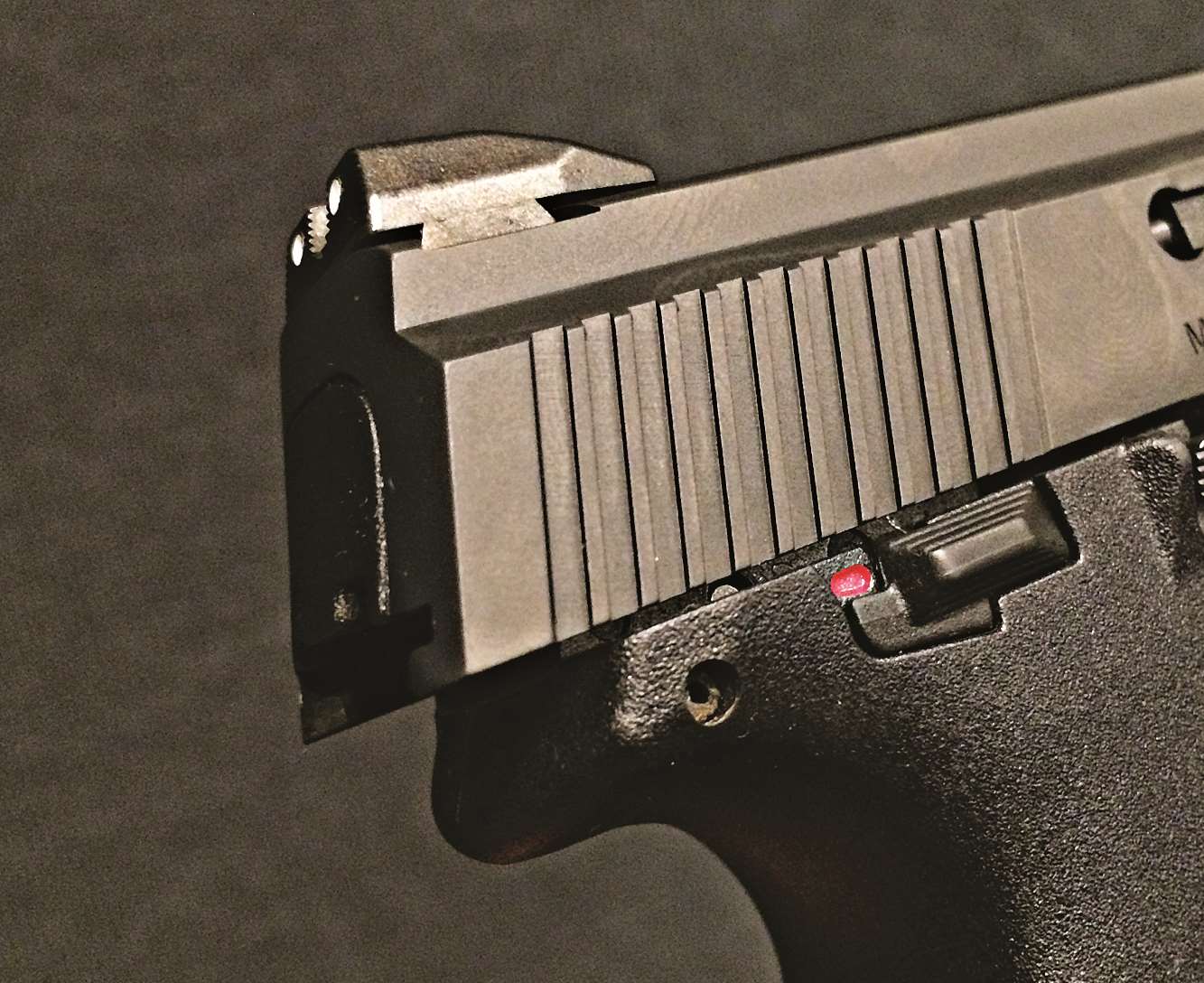
A little review helps: Types I (failure to fire) and II (failure to eject) are cured with “tap/rack.” This ubiquitous process entails a firm tap/push on the bottom of the magazine to ensure it is fully seated, and a cycle, or “rack” of the slide to eject a problematic round or case.
In the case of a Type III—a feedway blockage—we’re compelled to add removal of the magazine, additional cycles of slide actuation (three or four), and a reload. (Remember that we start with tap/rack here too, but mainly because it is so effectively diagnostic.)
By the way, a carry arm that exhibits these malfunctions with any frequency gets a) an ammunition change; then b) a trip to the gunsmith; and finally c) replaced. No matter how much you “like” a firearm’s other attributes, there is no reason to put up with poor reliability. Dump that turkey.
The remaining malfunction is a Type IV. Otherwise known as the “out of battery” malfunction, it’s a tough-to-fix disaster that is thankfully very rare—especially with factory ammo. We’ve seen instructors who don’t even teach how to mend it, and we get why: In cases where this occurs and a pistol is not actually broken, the reduction requires either a tool, or a dramatic, forceful and unusual technique. For a malfunction that many shooters will never experience, it’s an obvious casualty to cost/benefit analysis for valuable instructional time.
We’d argue, however, that a truly prepared Carry Lifer doesn’t have room for this exception.
First, then, is knowing a Type IV malfunction when you see it. Like the others, an expected “bang” does not occur, and depending on severity, the trigger of your semi-auto will generally not have reset—the press will be abnormally short and ineffectual (“mushy” is the hot-rod, gun-guy technical term). Inspection at the rear of the pistol and particularly of the slide will reveal a failure of the slide to go all the way forward, technically into “battery,” and locking action for safe firing. Hence the name, “out of battery.”
There is an important distinction here between the Type III and IV. In a III, the slide is back nearly to slide-locked position because the entire length of the cartridge corresponds precisely to the held-open dimension. In a IV, the slide may be held rearward as little 1/10 of an inch. It’s no surprise that many shooters don’t notice the Type IV condition even with protracted inspection the first (or second or third …) time they see one. It can be visually subtle.
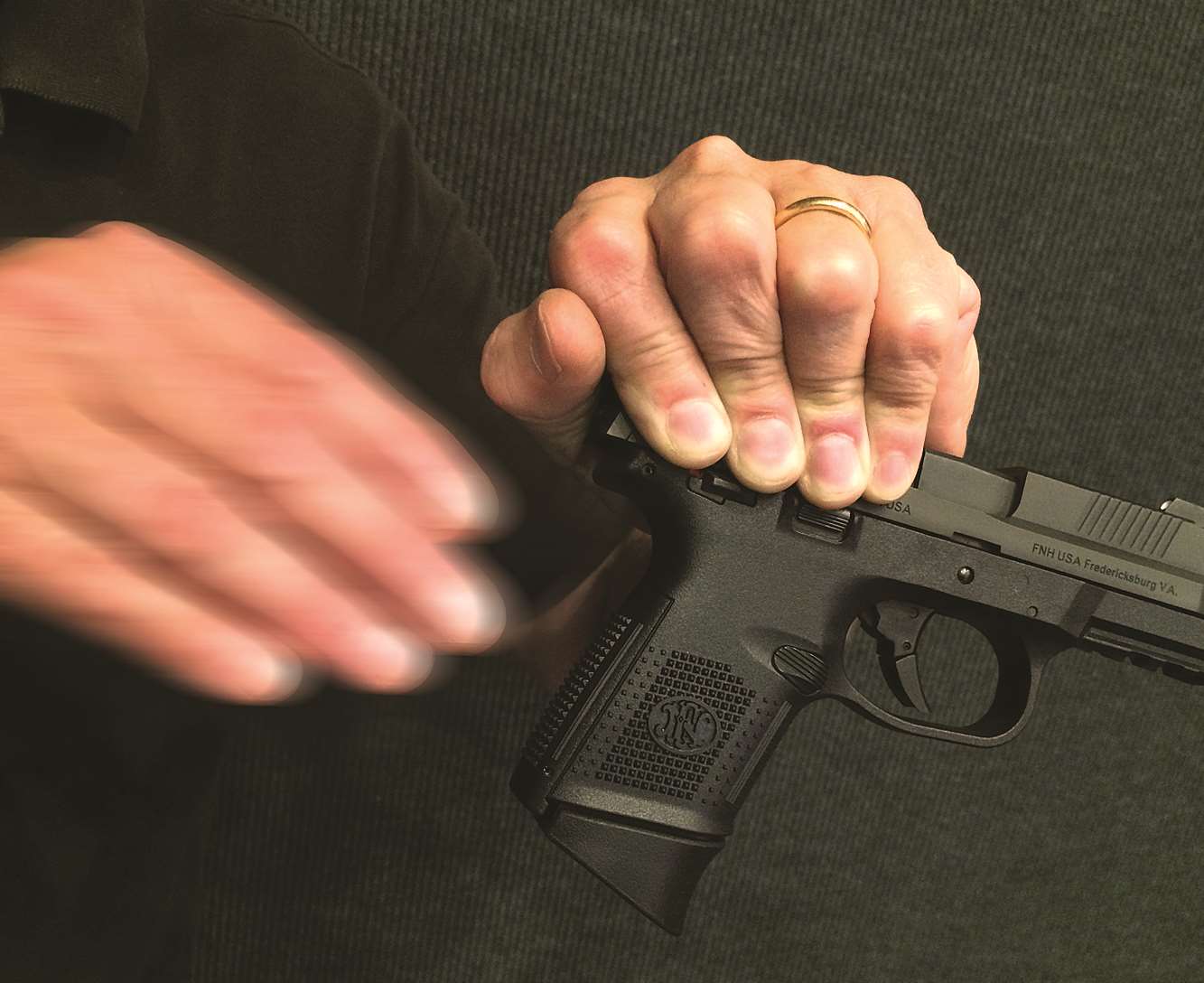
Second is consideration of causes. We know this often gets laid off on a broken pistol, but this is actually quite rare (we can’t recall even one). Two other causes are far more likely. A squib occurs to us first as a rule because it’s more problematic, even dangerous. This is where an under or uncharged round (primer, but little or no powder) puts a bullet in the bore but does not expel it.
If this is the reason for your Type IV, you’ve actually been very lucky in the sense of preserving your firearm. The slide is now being held slightly open because there isn’t room, depth-of-chamber-wise, for the full length of the subsequent round to chamber behind the projectile from the squib. Good quality firearms are designed not to fire in this condition so you are spared putting a full power round down a plugged bore and blowing up your pistol even if you erroneously try to hand cycle. Whew, right? (Note that a primer-only ignition is nowhere near powerful enough to put a cartridge from the magazine into firing position anyway.)
An underpowered round is actually more dangerous, as it can put a projectile at some intermediate distance down the bore. This will allow you to chamber a new round, at least theoretically, and then chase the first projectile with a second. Boom. Sore hands. Blown-up gun (or at least barrel). Tears.
Fortunately, a remotely attentive shooter gets not one but three clues that something is badly amiss even if the action appears to cycle to closure. Squibs have a very peculiar report, noticeably softer recoil and usually are not sufficiently powerful to chamber a new round behind an unexpelled projectile even if it’s beyond the chamber. Just stop, stop, stop what you’re doing when you here that weird, soft “pop.” It’s the one time tap/rack will get you into trouble, not out of it.
An “out of battery” stoppage of this type generally must be cleared with a tool, by the way. We recommend something along these lines. Remember, you always clear a squib back the way it came—toward the breech, not the muzzle. If this gives you the willies, good. It’s just one more reason to not buy cheap ammo just because it’s cheap. If you reload, it’s a reason to “up” your game: The gun you save may be your own.
The non-squib cause of Type IVs is actually by far the most common, and relates most frequently to handloaded/reloaded/remanufactured ammunition. As such, you’ll see it with surprising (and annoying to the shooter) frequency in competition. Basically, it’s due to out-of-dimensional spec ammo in one of three places.
The first is over-long cartridges. This comes almost exclusively from bullets seated too long, and in theory should never occur. When it does, it means a cartridge has been assembled and never chamber checked in the firearm where it’s being used. For all kinds of reasons, this is just plain dumb, as well as a little dangerous. (It’s also why we stopped checking cartridges in chamber gauges: Certain bullet profiles fit fine in a gauge, yet will get just beyond the leade in some barrels and make premature contact with the rifling. It results in a custom-fabbed Type IV, in other words. Check/prevent this with the “thunk” test recommended here.)
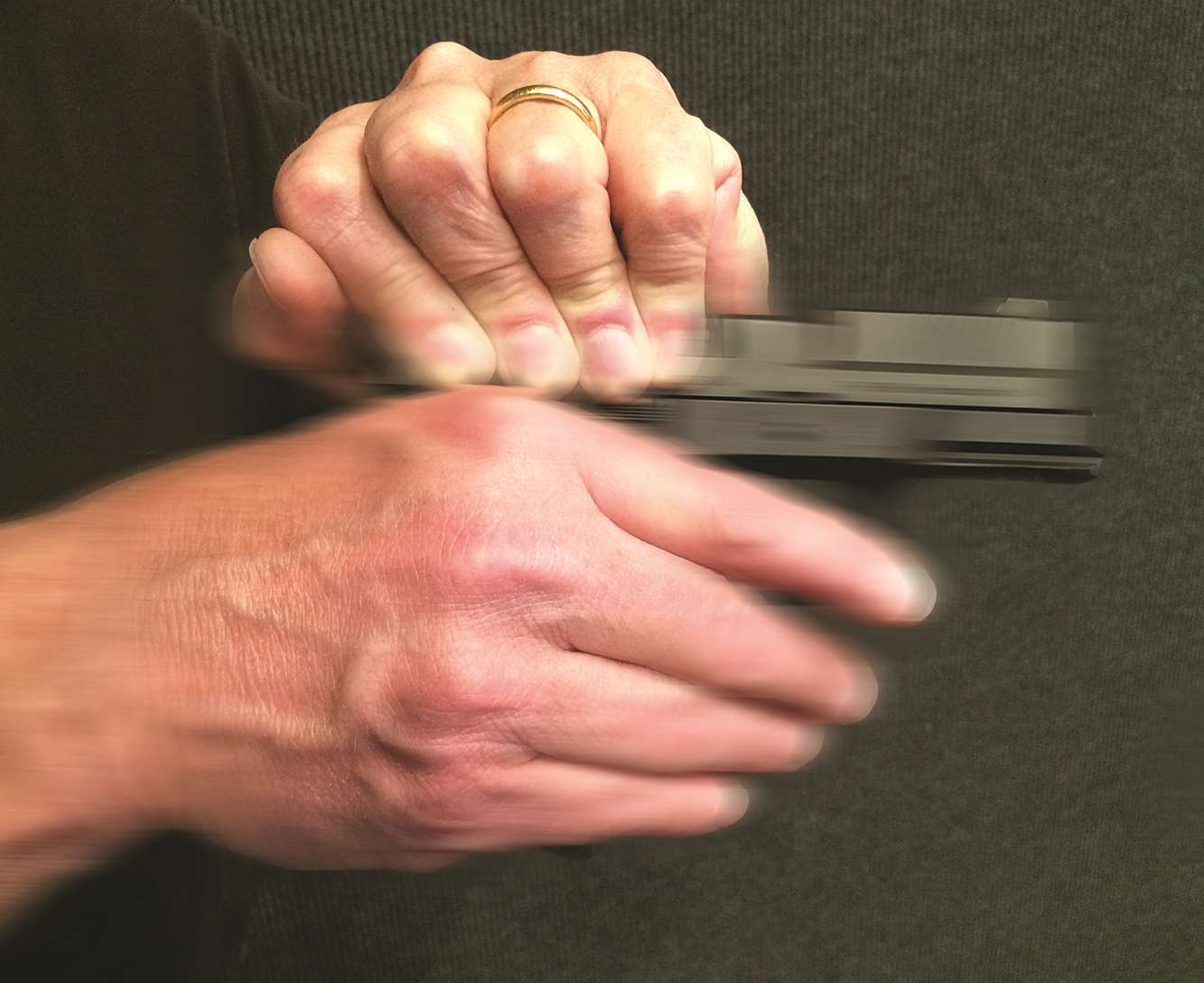
If you get unlucky enough, your pistol will just barely close, yet the rifling will grab the bullet tightly enough to unseat the bullet. It’s an iffy Type IV, perhaps, but some sort of malfunction is in your near future, like when a hand-cycled round (on “If you are finished, unload and show clear,” for instance) leaves the bullet behind, but dumps powder inside your pistol. Oh, goody.
The second cause is a case that is incompletely resized at the base/web. This can result from a die left too high, or from an “over-expanded” case that has a thin ridge of brass pushed down to the bottom of the web in the resizing step. In either case, part or all of the diameter is too large to allow the round to fully seat the case mouth against the shoulder of the chamber, and effectively holds your pistol out of battery. This is a weaker cause of out of battery, and you’ll often see a shooter smack the back of the slide in an attempt to complete the seating process.
And it even works, now and again. But it can also make the problem worse: Trigger reset is chancy under these conditions, and more tension is put into the friction lock you’re fighting between the over-diameter case and the chamber. You’ll get to bang if you can hit that slide hard enough, but if you don’t, the malfunction has been tightened. We’ve done this ourselves, but can’t recommend it.
The last cause is the most likely as well as the hardest to fix in that it’s the staunchest—a damaged or improperly crimped case mouth. The first circumstance is how this is most likely to occur in factory ammo. As such it’s extremely rare, but all the more puzzling when it does occur: Somehow, a “burr” makes the case mouth bind badly enough that battery can’t be achieved. This is best addressed by inspection and that “thunk” test.
The most likely cause of this—and all Type IVs—however, is an improperly closed crimp. The short version is straightforward: In order to seat a bullet in the case, the case mouth is slightly flared so that the base of the projectile can be seated without damage to the bullet base (important for accuracy). Once seated to the proper depth, this flare must be closed a fairly precise amount: enough to make the bullet mechanically strong and retain the bullet in the cartridge, but not so much that proper case mouth/chamber shoulder contact—and hence ignition—will be compromised. Too much closure is a different problem. Too little is a rock solid Type IV.
A technical point here: This is the worst Type IV in the sense of being the tightest. As most of the cycling action has occurred, the energy stored in all those springs has how been applied to making an oversized cartridge fit your chamber. Or tried, anyway.
Clearing this stoppage is different from all the others. Once you see the slight-ish slide displacement to the rear, you know that tap/rack adds nothing, so don’t waste time on it. (If you’re still sling-shotting your slide, trying it here—we hope—will make you give this technique up once and for all: It’s so helplessly inadequate on a Type IV that even the most ardent should finally be convinced.) Instead, drop the magazine. If you wish to retain it, you’ll have to grab it and return it to your belt or pocket—we’ve never seen “pinkie” finger retention work here, and sure can’t do it ourselves.
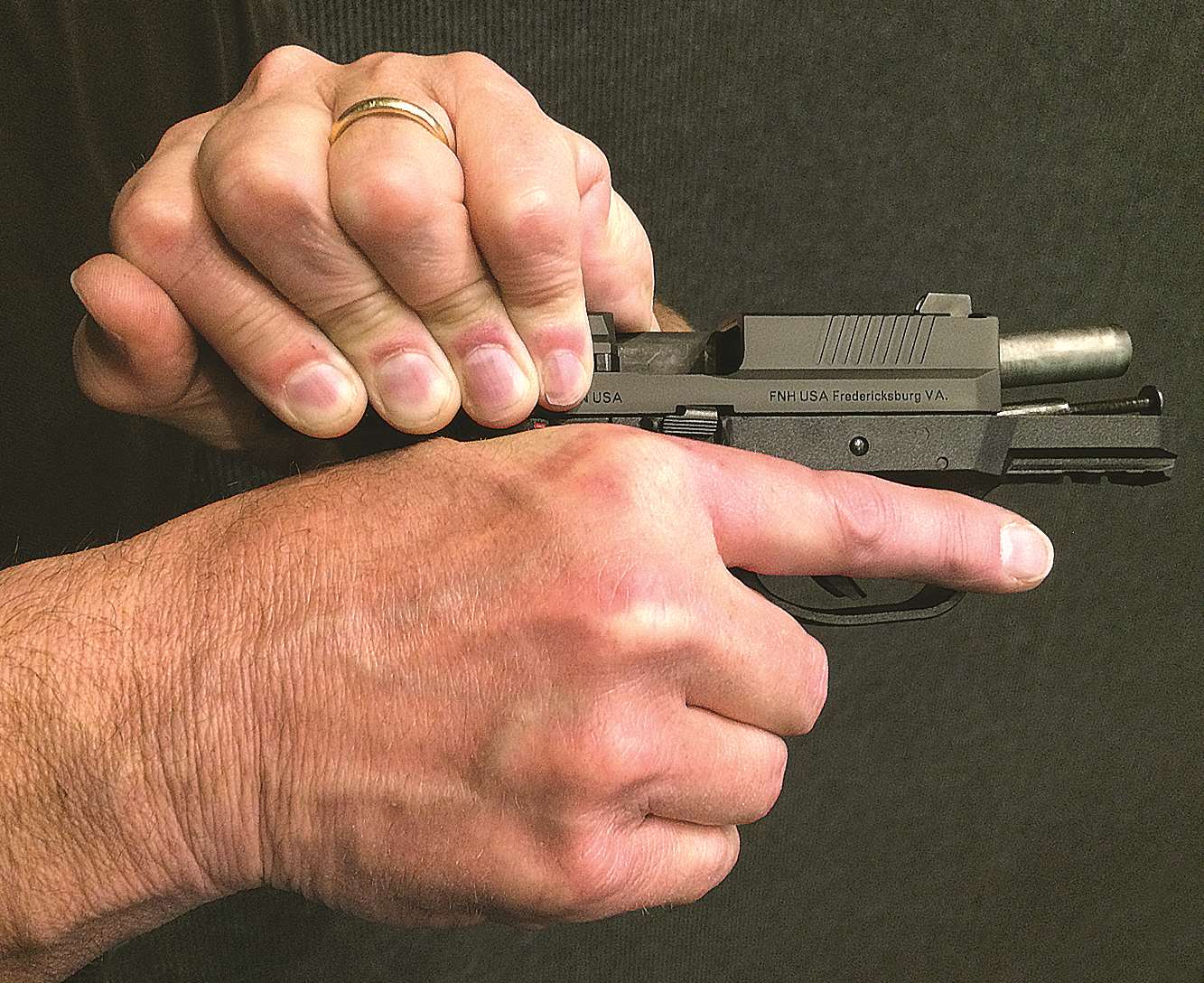
Next, grab the top of the slide from the side with your weak hand. (As with any slide manipulation, this is still no excuse to flag/sweep yourself.) Your weak-hand grip needs to be as strong as possible, because in what comes next, it will retain your pistol.
You’re now holding the pistol by the slide and from above with your weak hand. The next step is to draw back your strong hand—six or eight inches is usually plenty—and then drive it forward as you re-grip the pistol. Unless your extractor is broken, this is almost unfailing in its ability to clear a Type IV. You’ll occasionally need to repeat the regrip, but that’s not a problem. Do make sure your muzzle remains downrange.
Believe it or not, that’s it. Your pistol is now back in shooting or even fighting trim. We recommend you retrieve the bullet and inspect it if you can. If intact, it will generally have a very bright ring or partial ring at one end of the case or the other, and this corresponds to wherever the case was over-diameter. After all, you just “polished” it, so to speak, against the steel of your chamber. But if the bullet itself is still in the cartridge, you know you have a clear muzzle, too. (It’s possible to have a cause one and three combine, we guess, but we’ve never heard or encountered it. If you’re training, we obviously recommend your squib rod to confirm a clear muzzle.)
There is a “tool” for clearing Type IVs, and it works just fine. But you can guess the reason we’d call this a distant second for the Carry Life. It depends on having the tool with you and being able to use it and retrieve it in a hurry—not likely in a defensive situation.
Now practice these just as you do your shooting, and Carry on.












